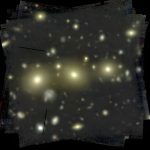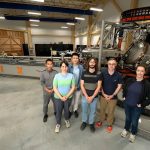Scientists debunk long-standing myth: stars and dark matter aren’t working together after all
For years, astronomers have been puzzled by a strange pattern observed in galaxies. No matter the age, shape, or size of a galaxy, the...
Could we ever harness quantum vacuum energy?
The fabric of spacetime is roiling with vibrating quantum fields, known as the vacuum energy.
It’s right there, everywhere we look. Could we ever get...
Scientists discover the heaviest exotic antimatter nucleus yet
In an incredible breakthrough, scientists working at the Relativistic Heavy Ion Collider (RHIC), a powerful machine that smashes atomic nuclei together to recreate conditions...
Scientists discover hidden behaviors of “excitons” in magnetic materials
A team of scientists from the U.S. Department of Energy's Brookhaven National Laboratory has made an exciting discovery about a unique class of materials...
Scientists find new way to unlock the potential of quantum materials
Quantum materials, which operate based on the strange rules of quantum mechanics, have the potential to revolutionize technology.
These materials can exhibit unusual behaviors, like...
Scientists unlock surprising clues to higher temperature superconductors
For over a century, scientists have been fascinated by superconductors—special materials that allow electricity to flow through them without losing any energy.
These materials can...
Scientists discover signs of water on asteroid psyche, offering clues to solar system’s history
A team of scientists has found evidence of water on the surface of the asteroid Psyche, thanks to data from NASA's James Webb Space...
Scientists achieve breakthrough in neutrino detection with new prototype
In a major advancement for the international Deep Underground Neutrino Experiment (DUNE), scientists have successfully detected the first neutrinos using a new prototype particle...
Scientists use high-speed cameras to uncover how microplastics move in water
Microplastics are a growing environmental concern, as these tiny particles end up in rivers and oceans, accumulate in living organisms, and disrupt entire ecosystems.
One...
Scientists create new superconductor that could revolutionize quantum computing and electronics
A team of researchers from the California NanoSystems Institute at UCLA has developed a unique material that could be a game-changer for quantum computing...










